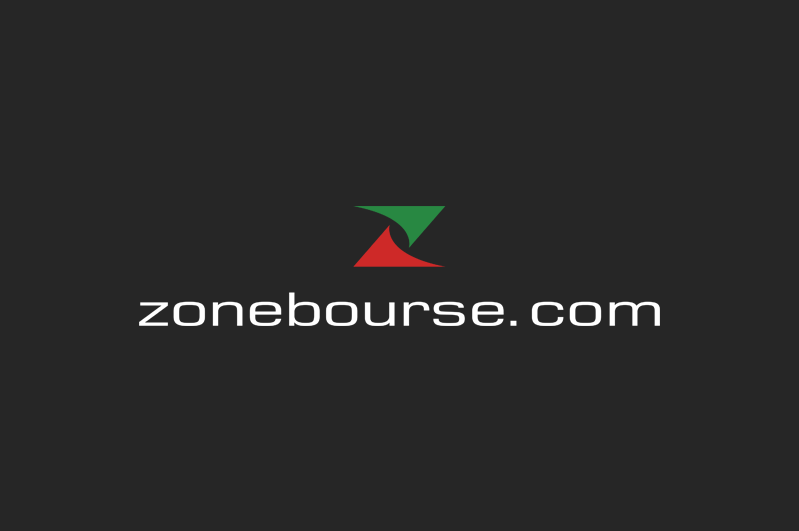Why Web3.0 blockchain technology is driving a six trillion dollar market


By 2023, the Web3.0 blockchain technology sector will be worth more than six trillion dollars, according to Market Research Future, and Web3.0 will continue to grow at a CAGR of 44.6% from 2023 to 2030.
Because Web3.0 relies on blockchain, many mistakenly believe that its fate is inevitably tied to the volatile cryptocurrency market. However, crypto is only one part of the new sector. Gartner explains that while cryptocurrencies crashed in the first half of 2022, decision makers should not assume that the value of Web3.0 technology will be affected. According to the research and consulting firm, Web3.0 technology will soon reach its adoption tipping point, and industries from aircraft maintenance to food safety will tokenize their applications.
What is driving the growth of Web3.0?
Web3.0 Blockchain Market Research Report reveals business, technical and security reasons driving Web3.0 growth. While the COVID-19 pandemic devastated industries such as hospitality, automotive, aviation and retail, the IT industry’s revenue steadily increased. IT also saw new market opportunities as users demanded 5G technology, virtual and augmented reality, blockchain applications, AI and machine learning. These technologies are the pillars on which Web3.0 is built.
SEE: Metaverse Cheat Sheet: Everything You Need to Know (Free PDF) (TechRepublic)
“Blockchain has been a proven technology that took the security of crypto and NFTs to the next level — now it’s poised to transform the next generation of online technologies,” Aarti Dhapte, senior analyst at Market Research Future told TechRepublic. “Web3 blockchain will completely transform the existing conventional processes in the different sectors.”
From financial services to retail and e-commerce, media and entertainment, healthcare, IT, government and energy: Almost all sectors are expected to adopt the Web3.0 blockchain.
Top executives and decision makers see the potential in the highly transparent nature of a decentralized Web3.0, where all transactions are recorded and recorded and easily traceable. On the other hand, developers and IT teams are investing in Web3.0 because of the strength of the rapidly evolving technology.
The advantages of the blockchain are appealing. It improves customer adoption by being easily accessible to everyone, the cost is extremely low, and the speed far exceeds that of traditional centralized operations. The cybersecurity sector also praises decentralized networks for being more secure, because to breach a blockchain operation, an attacker must synchronize multiple attacks at once. Blockchain is also being integrated with IoT for logistics, supply chains and factory line operations, attracting the industrial sector.
“Web 3.0 has helped change how humans and machines interact, allowing data transfer, cryptocurrency-based payments and easy ownership transfer,” the report said.
Leading companies driving Web3.0 growth include Binance, Polkadot (Web3 Foundation), Helium Systems Inc., Decentraland, Alchemy Insights and Antier Solutions.
The importance of the financial world in Web3.0
One of the main drivers of Web3.0 blockchain technology is the banking, finance and insurance sector. As the new technology is expected to revolutionize the traditional financial systems, the weight of the global economy is pushing Web3.0 into a new era.
“Decentralized finance will play a much more important role than it does now,” Dhapte said.
The unique features of a decentralized network will also increase security. For example, the insurance sector will see fraud reduced and insurance buyers can expect premium prices to drop as processes become more secure and error-free. Similarly, all digital financial sectors will benefit. Governments are also looking at using blockchain to store land records, for digital election systems, supply chains and military and defense applications.
User-centric: What is Web 3.0 blockchain technology?
The concept of Web3.0 involves data ownership and decentralized control. The first version of the internet, Web1.0, was built entirely on content produced by governments, organizations and businesses. This web was mainly information-oriented and slowly but gradually transitioned into a consumer-driven area. Few users of this web version were content creators.
Forbes explains that with Web 2.0, users became creators, turning to social media, blogs and websites. However, they relied on centralized online services that are mainly owned by large technology companies. Content creation became a business that required audience building, and advertising became the biggest earner for online technology companies.
Dhapte explains that the attractiveness of Web3 is that instead of accessing the internet through services provided by companies such as Google, Apple or Facebook, individuals own and control parts of the internet. Unlike data, content or art hosted on the traditional internet, in Web3.0 when the content is verified through the blockchain, it has a creator, an owner and a value.
“Decentralized infrastructure and application platforms will displace centralized technology giants, and individuals will be able to rightfully own their data,” Forbes assured.
The Internet has always been about connecting users, and billions are expected to actively use Web3.0 technology on decentralized social media platforms.
“Content creators on a decentralized social media equivalent can retain greater control over their digital identity while being rewarded for the activity and value they create on the network,” said Dhapte.
Different industries, different blockchain applications
E-commerce and retail are expected to be the massive end users of this new technology. They will benefit from more secure transactions, new apps and services, and new ways to buy and sell. The blockchain is also presented as a solution to privacy concerns – a major trend among global users who no longer want to give away their personal data to large technology companies.
Other industries use the blockchain in different ways. For example, the healthcare system is reimagining the storage and management of electronic health records.
“Currently, patient records exist in large, silo-based, centralized IT systems, making it incredibly difficult to share data between different healthcare teams and services,” explained Dhapte.
The risk of storing sensible patient data on centralized systems – where it only takes one breach to be compromised – stands in stark contrast to the security benefits decentralized networks can provide.
“Blockchain will enable accurate data sharing between healthcare professionals, which simply means accuracy in diagnosis and an increase in treatment efficiency,” said Dhapte.
In the pharmaceutical industry, Web3.0 blockchain is poised to offer more efficiency in supply chains, transform data management in clinical trials and quality management in the pharmaceutical sector. Supply chain management, IoT and other digital systems that operate with multiple endpoints can be more resilient to disruptions when managed by decentralized networks.
Web3.0 challenges: Energy and regulations
The blockchain has been criticized for its massive use of energy. Bitcoin is estimated to use 707 kilowatt hours of electricity per transaction. While this consumption is significantly greater than other digital and centralized transactions, the crypto energy problem has become a global concern.
Projects like Bitcoin Green – which uses highly efficient proof-of-stake consensus and renewable energy sources – have risen as a solution. These are part of a movement to build a zero-carbon, fair and emotionless blockchain, as TechRepublic reported in July.
But Dhapte warns that even more needs to be done to meet this challenge.
“The reality is that there is not enough renewable energy production to cover all the activities, and if miners switch completely to renewable sources, there will be an excessive burden on non-renewable energy sources,” she said.
Another challenge with no immediate solution in sight is blockchain regulation. The global legal landscape for blockchain is complex, diverse and often confusing or non-existent. Should senior managers be concerned about regulations?
According to Dhapte, they shouldn’t. Dhapte explains that coins may be banned in some countries, but blockchain technology is not. Around 40 countries have either completely banned or restricted the use of cryptocurrency, including China, Egypt, Qatar, Kuwait and Vietnam.
“This ban will not have much effect on the Web3.0 blockchain market development since other major countries are actively promoting and supporting the upcoming Web3.0 era,” Dhapte said.
China may have banned cryptocurrency, but they are still using blockchain technology to build a stronger economy. By 2020, the Asian country had approved more than 220 blockchain projects and accelerated the release of the digital Yuan, as reported by International Finance.
“Other countries where digital coins are banned will also want to tap into the true potential of the Web3 technology,” adds Dhapte.
Web3.0 Innovations: What Managers Should Look For
The Web3.0 development industry is peaking at an all time high, with 2021 setting historic growth for Web3.0 development. Given the growing Web3 ecosystem, industry experts believe that Web3 developer demand will continue to grow over time.
In cybersecurity and app development, a major breakthrough is bounty programs, often run by ethical hackers grouped under organizations like HackerOne.
“Apart from discovering new talents and solutions, online challenges are also an excellent option to find blockchain developers who can help hunt bugs and develop Web3.0 code by participating in bounties,” explained Dhapte.
Web3.0 developers are rewarded with cryptocurrency tokens for completing a bounty. This is a good way for vendors who don’t have developers on their team—or who don’t want to allocate additional resources—but need to fix bugs in existing or upcoming Web3.0 applications.
From the widespread embrace of NFTs and cryptos to the proliferation of decentralized autonomous organizations and blockchain-based infrastructure and storage, rapid Web3.0 innovations are happening across the board.
According to the report, managers, decision makers and IT managers should look at the metaverse, the decentralized app industry, AI, video games and machine learning. These technologies will further accelerate the growth of Web3.0.






















